Online learning offers limitless opportunities
Study any time, anywhere with Mancosa's online certificate courses or online supported programmes
Online learning has had an impact on higher education in SA as well as globally, more so in the past year and a half, due to the pandemic.
In SA there was a distinction between public and private higher education institutions in terms of online learning readiness. The former struggled to migrate the curriculum online and prepare academic and support staff on the use of online learning, while the latter was able to seamlessly transition with little difficulty, says Danillè Janse van Vuuren, academic programme manager at private higher education institution, Mancosa.
Private higher education institutions, such as Mancosa, were able to adapt because they were already using a blended learning approach. In Mancosa’s case, though, the main mode of delivery was blended learning: some programmes were already offered via online learning before Covid-19.
It’s clear the pandemic has paved the way for a complete shift in higher education delivery, and by extension the need for purely online modes of delivery in general. Mancosa wants to explore whether online learning will become the preferred higher education delivery mode for SA in the future.
Online learning, or e-learning is a contemporary education delivery approach whereby both student and facilitator complete a course or programme learning via advanced information technology, mediated through the internet. Blended learning combines online educational learning with traditional classroom methods; in other words, face-to-face learning where course content is taught in person to students.
In many SA and global private higher education institutions, the option of online learning was already available while public higher education institutions relied heavily on face-to-face learning. This was due to a number of factors such as historic gaps in education due to Apartheid, language and cultural barriers, student population size, availability of resources and infrastructure, and an overreliance on traditional learning approaches to mention a few.
All higher education institutions in SA had to adapt to online learning to ensure academic delivery. Transitioning to online learning brings a number of advantages: facilitation can take place via webinars; students can learn at their leisure; additional academic material is accessible on its student portals; various activities and assessments can be completed virtually; and the list goes on.
Mancosa was able to continue with academic studies with little hindrance, and students completed their 2020 academic year as normal. Students from other higher education institutions, on the other hand, were still tackling their 2020 studies in 2021. Online learning promises to become the main delivery mode for higher education institutions locally. At least, for Mancosa, it has proven to bypass the many challenges faced by other higher education institutions.
As much as online learning appears to be a promising solution to the massification of higher education in the SA context, there are a number of elements that would need to be considered to ensure its viability in the future. A Zoom webinar discussing higher education in Africa debated this common refrain, and three elements stood out. First, there is a need to develop techno-centric approaches to teaching and learning. This would give SA higher education institutions the ability to reconceptualise or adapt their curriculum geared for the fourth industrial revolution and beyond.
Second, and rather controversial, is the digital divide, which will increase the gap between the haves and have nots in SA. This becomes apparent when focusing on the availability and access to internet data and digital technologies (such as laptops and routers) to access higher education online. SA has a connectivity rate of 67%, meaning a percentage of the population is still excluded. One argument presented is that data and digital technologies should be made available for free to students in need.
Finally, higher education institutions in SA must receive the necessary resources, infrastructure and financial support from various stakeholders. One is the government, which would need to provide strong leadership and policies to ensure alignment across these institutions. With a collaborative approach among stakeholders and a shared vision, this can be achieved.
Discussions on the need for online learning approaches, how best to navigate this daunting paradigm shift and best practice in managing this process, are still emerging. However, this is a good time for SA higher education institutions to tap into the limitless opportunities offered by online learning. Are we ready?
This article was paid for by Mancosa.
